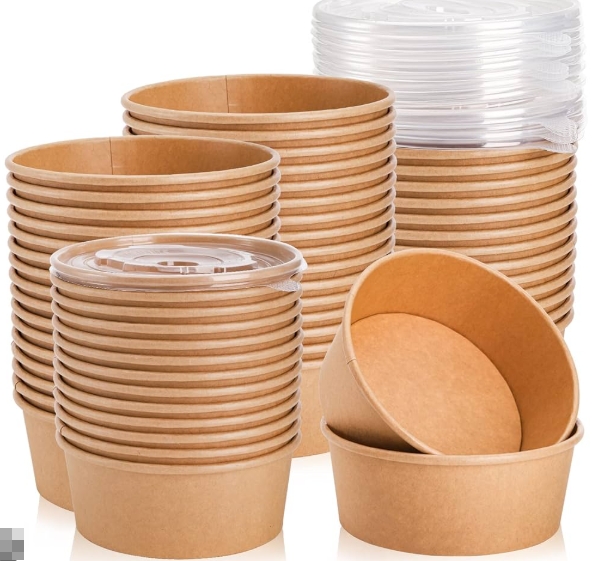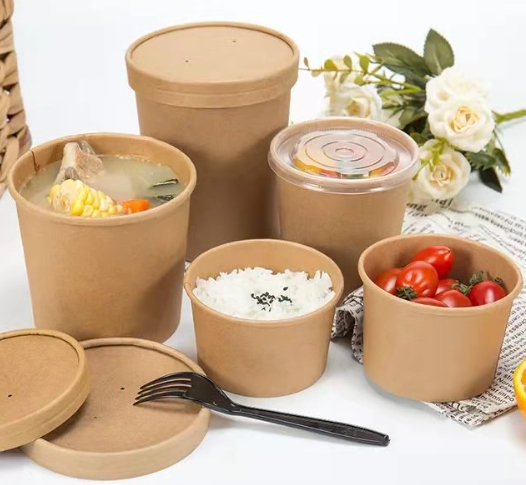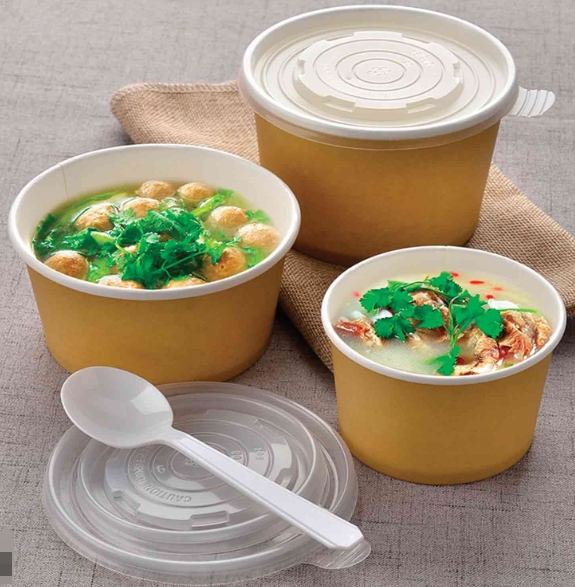
Content Menu
● Understanding FDA and EU Safety Standards
>> What Are FDA and EU Standards?
>> Why Compliance Matters
● Key Materials for Bowls and Lids
>> Common Materials and Their Safety Profiles
>>> Plastics
>>> Glass
>>> Stainless Steel
>>> Ceramics
>>> Bamboo and Other Natural Materials
● How to Verify FDA and EU Compliance
>> Certification and Documentation
>>> For FDA Compliance
>>> For EU Compliance
>> Labeling and Symbols
● Practical Steps to Select Safe Bowls and Lids
>> Step 1: Identify Your Needs
>> Step 2: Check Product Labels
>> Step 3: Request Documentation
>> Step 4: Evaluate Manufacturer Reputation
>> Step 5: Inspect for Quality
● Common Pitfalls and How to Avoid Them
>> Misleading Labels
>> Unknown Materials
>> Non-Transparent Suppliers
● The Role of Third-Party Testing
● Sustainable and Eco-Friendly Options
● Maintaining Compliance Over Time
● How to Choose the Right Supplier
>> Research and Reviews
>> Ask the Right Questions
>> Sample Testing
● Real-Life Scenarios: Making the Right Choice
>> Scenario 1: Home Use
>> Scenario 2: Food Business
>> Scenario 3: Product Development
● The Future of Food Contact Safety
● Conclusion
● FAQ
>> 1. What materials are safest for food contact bowls and lids?
>> 2. How can I tell if a bowl or lid is FDA or EU compliant?
>> 3. Are all eco-friendly bowls and lids safe for food?
>> 4. What should I do if I suspect a product is not compliant?
>> 5. Can I use the same bowl and lid for hot and cold foods?
Choosing the right bowl and lid for food storage, preparation, or serving is more than a matter of convenience or aesthetics. It is a vital step in ensuring the safety and health of everyone who uses these products. In both the United States and the European Union, strict regulations exist to protect consumers from exposure to harmful substances that may leach from food containers. Whether you are a home cook, a food business owner, or a product designer, understanding how to select bowls and lids that meet FDA and EU safety standards is essential. This comprehensive guide will walk you through the process, from understanding regulations to evaluating materials, verifying compliance, and making informed purchasing decisions.

Understanding FDA and EU Safety Standards
What Are FDA and EU Standards?
The FDA (Food and Drug Administration) in the United States and the European Union have established detailed frameworks for regulating materials intended to come into contact with food. These frameworks are designed to prevent contamination and ensure that products are safe for repeated use.
- FDA Standards: In the United States, the FDA regulates food contact materials under the Federal Food, Drug, and Cosmetic Act. This includes plastics, ceramics, glass, metals, and coatings used in bowls and lids. The FDA requires that these materials do not leach harmful substances into food under normal conditions of use.
- EU Standards: The European Union regulates food contact materials under Regulation (EC) No 1935/2004 and related directives. The EU also emphasizes traceability and documentation for all materials used in food contact products, ensuring that every component can be tracked through the supply chain.
Why Compliance Matters
Non-compliant products can pose significant health risks, including exposure to toxic chemicals, heavy metals, and microplastics. Compliance is not only a legal requirement but also a guarantee of consumer safety and product quality.
Key Materials for Bowls and Lids
Common Materials and Their Safety Profiles
When selecting a bowl and lid, the material is the first factor to consider. Each type of material has unique properties and is subject to specific regulations.
Plastics
- Polypropylene (PP): Widely used for its heat resistance and durability. It should be free from harmful additives such as BPA.
- Polyethylene (PE): Common in lightweight containers. It must be food-grade and free from contaminants.
- Polycarbonate: Known for its clarity and strength, but may contain BPA unless specifically labeled as BPA-free.
Glass
Glass is inert and does not react with food. It is generally regarded as safe if it is free from lead and cadmium.
Stainless Steel
Stainless steel is durable, non-reactive, and resistant to corrosion. It must be of a grade suitable for food contact, such as 304 or 316.
Ceramics
Ceramic bowls and lids must be coated with food-safe glazes that do not leach lead or other heavy metals.
Bamboo and Other Natural Materials
Bamboo and other plant-based materials are increasingly popular for eco-friendly products. However, these must be processed without harmful chemicals and should be certified for food contact.
How to Verify FDA and EU Compliance
Certification and Documentation
For FDA Compliance
- Declarations of Compliance: Manufacturers should provide a declaration stating that the product meets FDA food contact requirements.
- Material Safety Data Sheets (MSDS): These documents often include information on compliance.
- Third-Party Testing: Products may be tested by independent labs to verify they meet FDA standards.
For EU Compliance
- Declaration of Conformity: Required for all food contact materials, this document details the regulations the product complies with.
- Traceability: EU law requires that all materials and articles intended for food contact are traceable through the supply chain.
- CE Marking: While not always required for food contact materials, some products may carry this mark as evidence of compliance with EU directives.
Labeling and Symbols
- Food Safe Symbol: A glass and fork symbol indicates suitability for food contact.
- Temperature Range: Indicates whether the product is microwave, freezer, or dishwasher safe.
- BPA-Free: Especially important for plastic products.
Practical Steps to Select Safe Bowls and Lids
Step 1: Identify Your Needs
Consider the intended use—will the bowl and lid be used for hot or cold foods, microwave heating, or long-term storage? This will influence the material choice.
Step 2: Check Product Labels
Examine the packaging for compliance symbols, temperature ratings, and material information. Look for explicit statements about FDA or EU compliance.
Step 3: Request Documentation
For bulk purchases or commercial use, request declarations of conformity or compliance certificates from the supplier.
Step 4: Evaluate Manufacturer Reputation
Purchase from reputable brands or suppliers known for quality and transparency. Check for reviews or third-party certifications.
Step 5: Inspect for Quality
Physically inspect products for defects, poor finishes, or unusual odors, which may indicate substandard materials or manufacturing.

Common Pitfalls and How to Avoid Them
Misleading Labels
Some products may falsely claim to be “food safe” without proper testing. Always verify claims with documentation.
Unknown Materials
Avoid products with vague material descriptions or those lacking clear labeling.
Non-Transparent Suppliers
Suppliers unwilling to provide compliance documents may not adhere to safety standards.
The Role of Third-Party Testing
Independent laboratories can test products for compliance with FDA and EU standards. These tests may include:
- Migration testing to ensure chemicals do not leach into food
- Heavy metal analysis for ceramics and glass
- Structural integrity tests for plastics and metals
Third-party certification adds an extra layer of assurance, especially for commercial buyers.
Sustainable and Eco-Friendly Options
Many consumers now seek eco-friendly bowls and lids. While materials like bamboo, compostable plastics, and recycled glass are popular, they must still meet FDA and EU safety standards. Always verify that eco-friendly claims are backed by appropriate certifications.
Maintaining Compliance Over Time
Compliance is not a one-time event. Regularly review supplier documentation, especially if you change suppliers or if regulations are updated. For businesses, maintaining records of compliance documents is essential for audits and inspections.
How to Choose the Right Supplier
Research and Reviews
Look for suppliers with a history of compliance and positive customer feedback. Reliable suppliers are transparent about their products and can provide documentation upon request.
Ask the Right Questions
When contacting a supplier, ask about:
- The origin of the materials
- The manufacturing process
- Available compliance documentation
- Any third-party testing or certifications
Sample Testing
Before making a large purchase, consider ordering samples and having them independently tested for compliance. This is particularly important for businesses or those importing products.
Real-Life Scenarios: Making the Right Choice
Scenario 1: Home Use
If you are buying bowls and lids for home use, prioritize products with clear labeling and symbols indicating food safety. Choose materials that suit your lifestyle, such as microwave-safe plastics or durable glass.
Scenario 2: Food Business
For restaurants, catering, or food packaging businesses, compliance is even more critical. Work with suppliers who can provide full documentation and consider regular third-party testing to ensure ongoing safety.
Scenario 3: Product Development
If you are designing or manufacturing your own bowls and lids, consult with regulatory experts early in the process. Source materials from reputable suppliers and invest in comprehensive testing before bringing your product to market.
The Future of Food Contact Safety
As technology and consumer awareness evolve, so do regulations. Expect to see more emphasis on sustainable materials, transparency in supply chains, and digital tracking of compliance documents. Staying informed about regulatory changes will help you continue to make safe choices.
Conclusion
Selecting a bowl and lid that meets FDA and EU safety standards is a multi-step process that requires attention to detail, an understanding of materials, and a commitment to verifying compliance. By following the guidelines outlined above, you can ensure that your food storage and serving products are safe, reliable, and legally compliant. Whether for home or business use, making informed choices protects both health and reputation. Always prioritize transparency, documentation, and quality when making your selection.

FAQ
1. What materials are safest for food contact bowls and lids?
Stainless steel, glass, and certain food-grade plastics like polypropylene and polyethylene are considered safe when they meet regulatory standards. Ceramics and bamboo can also be safe if properly glazed or treated.
2. How can I tell if a bowl or lid is FDA or EU compliant?
Check for compliance symbols, declarations of conformity, and request documentation from the supplier. Reputable manufacturers provide clear labeling and are transparent about their certifications.
3. Are all eco-friendly bowls and lids safe for food?
Not necessarily. Even eco-friendly materials must meet the same safety standards as conventional materials. Always verify that the product has been tested and certified for food contact.
4. What should I do if I suspect a product is not compliant?
Avoid using the product for food contact, contact the manufacturer for documentation, and report concerns to relevant authorities if necessary.
5. Can I use the same bowl and lid for hot and cold foods?
It depends on the material and manufacturer's guidelines. Some plastics may not be suitable for high temperatures, while glass and stainless steel are generally more versatile.

















